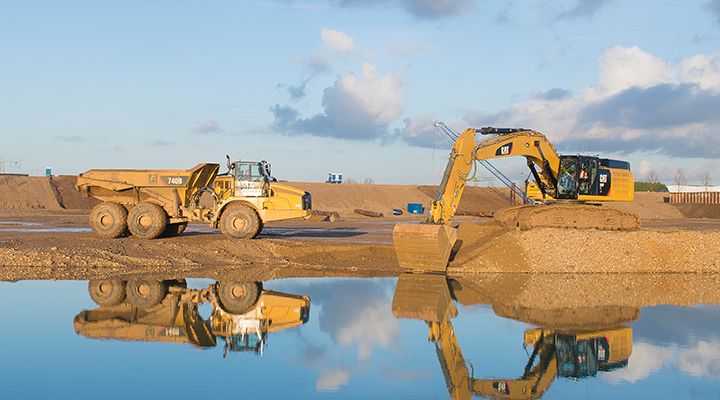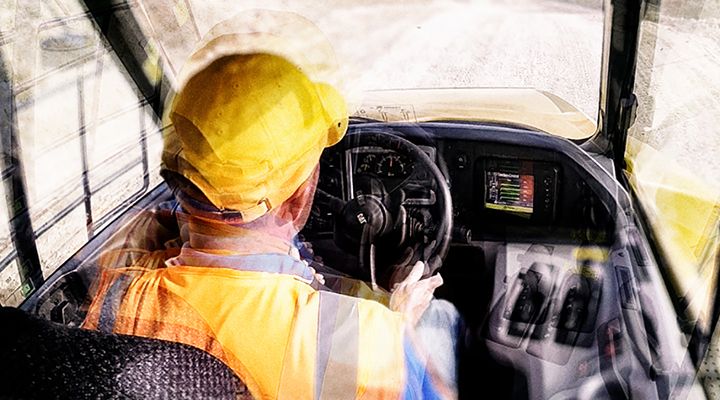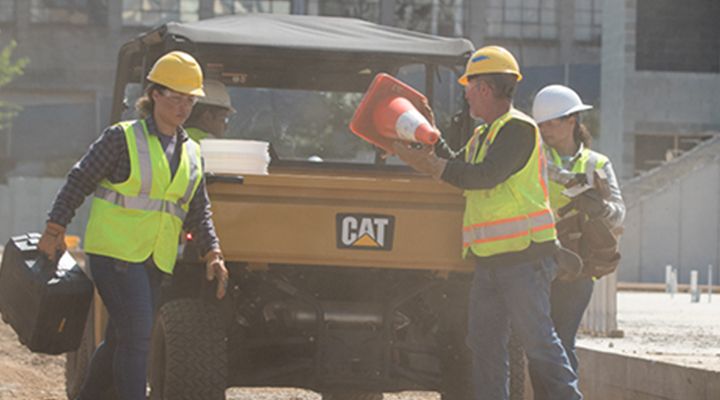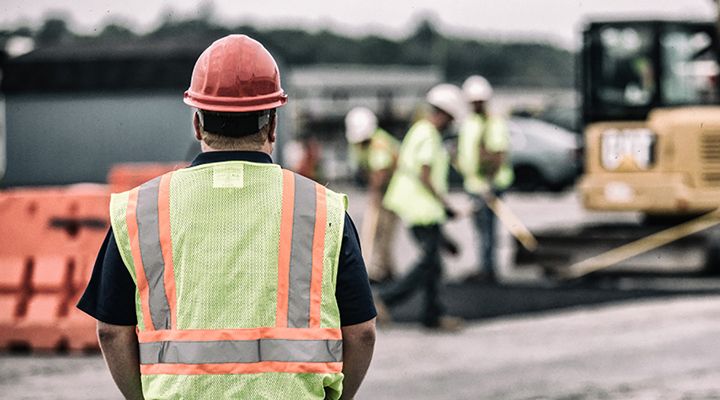If you already have an existing account with another Cat App, you can use the same account to sign in here.
One Account. All of Cat.
Your Caterpillar account is the single account you use to log in to select services and applications we offer. Shop for parts and machines online, manage your fleet, go mobile, and more.
Account Information
Site Settings
Security
BUILDING A 24/7 SAFETY CULTURE
Creating a culture that focuses on getting your team home safe every day is a positive way to show you care and respect your crew. We've outlined ways you can continue to foster that mindset on today's work site and on jobs to come.
Nothing shuts down a quarry and aggregates operation faster than an accident or serious injury. Anything from a broken bone to a major equipment collision can impact employee morale, site production and bottom-line performance. That’s why building a culture of safety that works around-the-clock is so important.
Over decades of boots-on-the-ground work in customer quarry sites, Caterpillar equipment training and safety teams have developed a wide range of strategies and technologies to improve site safety. And today, Cat equipment can be outfitted with an array of operator assist, tracking and avoidance technologies.
But the best safety tools are still good sets of eyes, an ongoing safety mindset and culture that says, “If you see a problem, point it out.” In this article, we’ll look at three ways your operation can build or strengthen a 24/7 safety culture to protect your people and your business.
Reward Good Safety Practices
In building a safety culture, carrots tend to work better than sticks. Empowering employees and contractors to report unsafe conditions is a good start — but then what? If someone commits a serious violation, you may need to take hard action. But if you punish every infraction, you’ll likely get fewer incident reports, which can create a false sense of security.
Instead, find ways to encourage constructive criticism and a welcoming attitude toward better safety practices. Financial rewards, safety contests between groups of operators and other positive reinforcements go a long way toward encouraging people to improve behaviors.
Communicate Effectively
Helping employees build good interpersonal communication skills is an important part of the safety equation, too.
In an article from Pit & Quarry magazine, Justin Ganschow of Caterpillar Safety Services notes that “Almost no organization trains its employees on how to have that conversation with a peer or superior when they see an unsafe behavior occur. Even fewer train employees on how to receive safety feedback from others in a constructive manner, and to respond with an attitude of gratitude.”
He goes on to say that the solution begins with the way managers address safety issues. “It’s not about being a compliance officer, citing rules and regulations or reciting the corporate safety policies. It’s about showing care and respect for other people because you don’t want something bad to happen to them or people around them.”
Management has to be visibly committed to safety initiatives, and employees must be empowered to speak openly about the risks they see around their work areas.
5 Goals for a Good Safety Culture
What does a solid safety culture look like? It’s one in which safety and safe operating practices are deeply embedded in daily site activities. Here are five goals to work toward in building your operation’s culture:
- Safety is owned at every level. Everyone understands what they are accountable for, from the leadership to the front line.
- Employees are engaged. Conversations about safety are a positive part of everyday work among all site personnel.
- Leaders walk the talk. Safety is routinely promoted in company-wide communications and practiced by officers, managers and supervisors.
- Best practices are adopted at all stages of production. Continual improvements are sought out, rewarded and spread through the operation.
- Safety data is recorded and analyzed. Behavioral and equipment data is used to spot trends and support strategic decision-making.
Once you’ve created an environment where “see something; say something” is rewarded practice, your people will be much more likely to routinely put safe operating procedures into action. Add ongoing training and appropriate technologies, and you’ll be well on your way to building a working environment that helps everyone get home safe every day, while improving your operation’s efficiency and productivity.
*****
Cited Article: https://www.pitandquarry.com/why-constructive-feedback-is-essential-to-safety-culture/
RELATED ARTICLES
You’re here to get ideas to grow your business. Read on for machine insights and expert tips and tricks to get more out of every job.
-
Smart Sites, Safe Sites
Learn how contractors, aggregates producers and other equipment owners are using Cat® Technology to enhance safety and manage risk.
Learn More -
Opioids and Construction: A Bad Combination
The opioid epidemic is dominating a lot of headlines these days, with the Centers for Disease Control and Prevention reporting that opioids were involved in more than 42,000 overdose deaths in 2016 — five times that of 1999. But if you think that’s a problem for the D.C. bureaucrats to handle, think again.
Learn More -
Reduce Risky Business on the Worksite
Technology that improves safety performance will also reduce risk and downtime.
Learn More -
Sobering Facts about Substance Abuse in Construction
Substance abuse is a big problem for construction employees. In fact, a 2015 study from the Substance Abuse and Mental Health Services Administration (SAMHSA) concluded that the construction industry has more drug and alcohol abuse than any other sector except for hospitality and food service.
Learn More






